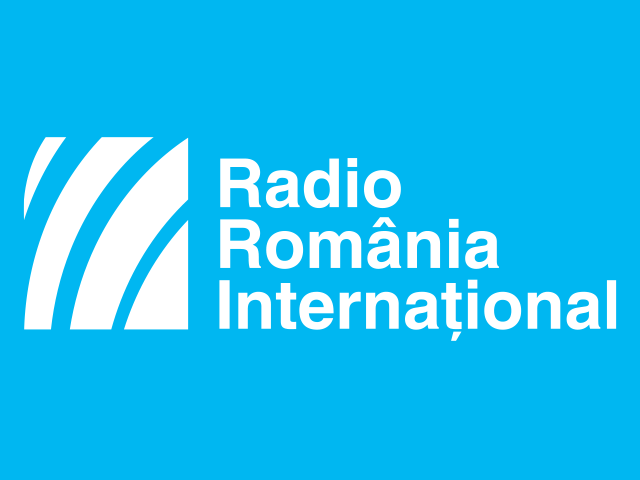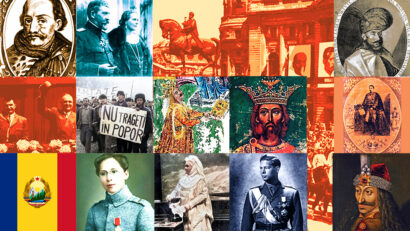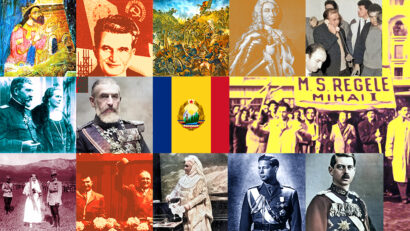Dacia, the last space of the Roman world
An exhibition about the ancient space in which the Romanians were later formed.

Steliu Lambru, 07.11.2022, 14:00
North of the River Danube, on its middle and lower course down to its mouth, ancient Greek and Roman sources mention the existence of Getic and Dacian tribes in the big Thracian conglomerate. The information we learn about the Getae and the Dacians differs from one author to another, and the amount of information is related to the period in which the authors wrote and to the accuracy of their documentation. It is not known exactly if the Getae and the Dacians were the same people, some opinions claim that they were identical, others that they were not. Most information, and the most accurate, seems to have been provided by the emperor Trajan, the conqueror of Dacia in the year 106 AD, who is the author of the volume “De bello dacico”. Trajans notes have been lost, but, one single sentence survives in the 6th-century treatise on Latin grammar by Priscian. It is a short quotation from Trajans text and refers to the way through the Banat region of the Roman army: “From here we went to Berzobis, then to Aixis”.
The political history of the Getae and Dacians ends in 106 AD when Trajan conquers the state of King Decebalus. A part of the Dacian space, namely Transylvania and todays Banat region inside the Carpathian arc and Oltenia between the Carpathians and the Danube, is transformed into a Roman province. Other Getae and Dacians such as those from Wallachia, Maramureș and Moldavia remained outside the Roman administration, but were influenced by the Roman culture and civilization. Thus, Dacia was until 275, the year in which Emperor Aurelian decided to withdraw the Roman army and bureaucracy from Dacia, the most advanced frontier of the Roman world in northeastern Europe.
The National History Museum of Romania opened the exhibition “Dacia. The last frontier of the Roman world”. It is the largest general exhibition dedicated to the Getae and Dacians, the Romans as well as the first migrants to this space organized in the last 25 years in Romania. The National Museum of Archeology in Madrid, Spain, and the National Roman Museum in Rome, Italy collaborated for the organization of the exhibition.
Ernest Oberländer-Târnoveanu, the director of the National History Museum of Romania, wanted to remove the political dimension from the history of the Getae and Dacians: “The Dacians do not belong to a political party, they do not belong to a particular way of thinking or ideology. They represent an important people of the antiquity based on which a nation was later built, through a very complicated process, a nation that today bears the name Romanians, continuing the name romanus from the antiquity and whose language is today largely based on the Latin language.”
The exhibition includes centerpieces of the culture of the Getae and Dacians: the golden helmet from Coțofenești, the treasures from Stâncești, Agighiol and Peretu, the princely treasure from Cucuteni-Băiceni, the silver treasures from Sâncrăieni, Herăstrău, Senereș and Vedea, the inscriptions that mention the kings Tiamarkos, Burebista and Decebalus. Also on display are the imperial portraits of Trajan, Antoninus Pius, Marcus Aurelius, Traianus Decius, the treasures from Pietroasele, Apahida and Histria.
However, Ernest Oberländer-Târnoveanu believes that there is plenty of room for new research: “We dont know as much about the Dacians as we should know, not only because their traces are spread over a large territory and in many places, often difficult to access, in high-altitude regions or in forested places, but also because of the fact that we dont allocate much money for these researches. We have gathered here vestiges from 45 museums, including the National History Museum of Romania and the Republic of Moldova. We have considered the Geto-Dacians, as they are conventionally called, in a continuous historical evolution, from the first elements that allow us to see that from the mass of the Thracian tribes, living north of the Danube, something happened that would later lead, from the point of view of material culture, to the classical Dacian civilization.”
The history of a people cannot be taken out of the context involving the presence of other peoples too. Ernest Oberländer-Târnoveanu is back at the microphone: “We followed the Dacians in their subsequent evolution, when part of them were included in the Roman Empire as a province. Also for the first time, we included the free Dacians in an exhibition, those Dacians who remained more or less outside the imperial Roman control. We have also included the period when the population of the former Roman province of Dacia and the populations of the free Dacians and other tribes settled here and were united in a great political and cultural union, known as the Sântana de Mureș-Cernehov culture. From a political point of view, the culture of Sântana de Mureș-Cerneahov represents the confederation of Gothic tribes, which has elements from the culture of the free Dacians, from the culture of the Sarmatians and other ethnic groups. This exhibition looks at almost 1,400 years of history: from the moment when we see different developments north and south of the Danube until 681, the year when the Eastern Roman Empire, which was becoming more of a Byzantine Empire, undertakes the last military and political action north of the Danube.”
“Dacia. The last frontier of the Roman world” is about the ancient space in which the Romanians were later formed. But it is equally about the history of others. (LS)




























